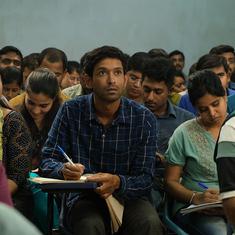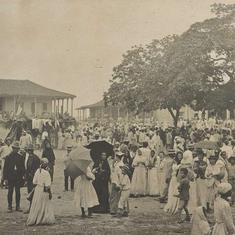Sometime in 2016, one of my evaluators and I had the following email exchange about a novel I was seriously considering:
“She: Really enjoyed it. Thought it was quite beautifully done, but the end was a little strange. There are some points where the narrative gets too involved with its own intelligence and seems needlessly complicated (almost self-indulgent), but overall, it’s a good read and deftly handles a very urban sort of crisis. I’d say take it on as intelligent mid-list fiction.
I: The word mid-list scares me. Whom should I pitch it to?”
My extreme reaction was not entirely unfounded. Over the past few years, especially since 2015, I have often heard publishing professionals across editorial, sales and marketing departments making statements such as, “It’s so midlist,” “It might be lost in the midlist,” “He/she is a better writer than most I know, but the subject is so midlist.” However, it was a recent statement by someone about how the sales team at a publishing house was allergic to anything midlist that made me decide to investigate further this endangered category of books.
What is a midlist book?
Simply put, it’s one that has neither the mass market appeal of a commercial novel, nor the gravitas or complexity of a literary one. It is, literally, in the middle of the publisher’s list. Such novels are eminently readable and will be read and enjoyed by some people, but there aren’t enough of these readers.
There is often something ordinary and forgettable about them, and while the writing is absolutely correct, it is often not exceptional. The term mid- doesn’t apply solely to a genre of books, but also to writers and subjects. “A midlist writer is usually one who is not big or well-known enough, and lacks a USP,” a senior marketing manager at a major publishing house told me.
By this logic, therefore, a celebrity or famous writer writing a decidedly midlist novel will not be considered a midlist writer. According to Juggernaut’s Anish Chandy, “Midlist authors aspire to be seen as literary fiction stars, and bristle when sometimes categorised as commercial fiction writers. The problem is that these classifications are highly subjective and sometimes the communication between the publisher and author isn’t open enough.”
While the term is usually reserved for fiction (multi-generational family sagas, autobiographical coming of age stories, issue-based, or propagandist novels, to name but three kinds), Chandy feels that the midlist can also encompass non-fiction titles – such as political books involving a niche subject, or some books on the environment and ecology. Such books are known to have a short-shelf life, and don’t add value to a publisher’s backlist – which means they don’t sell consistently over a long period of time.
Some publishers, like Renuka Chatterjee of Speaking Tiger Books, define the midlist slightly different: “A midlist book is one that we would expect would sell around 1500-2000 copies of, a maximum of 3000, and usually not by a well-known author. It’s either a debut, or by someone who may have 2-3 published works, but has not really sold in large numbers. This applies to both fiction and non-fiction.”
The rise and fall of the midlist
The category thrived in India till the end of the first decade of the 2000s, when the country still had several huge retail stores for books as well as robust independent bookstores. While the print-run for most of these titles rarely exceeded 3,000 copies, most of the stock that was sent out to the stores were sold.
It was also a time when India had just a few mainstream English publishers, and the wave of mass market writers hadn’t washed up on the shores yet. But soon afterwards, some of the largest retail stores, such as Reliance, Odyssey and Landmark, either shut shop or downsized massively, and the book-reading population started buying books online instead. As a result, titles that used to consistently sell out their first print runs were now barely crossing 1000 copies.
A veteran sales manager explained the reason the decline of the midlist coincided with that of brick and mortar stores: “Online bookstores either promote bestselling local or international authors, or perennial sellers like Power of Mind, Think and Grow Rich, or Word Power Made Easy. Most of the promotions are reserved for these books, and not enough is done for midlist writers. This is why sales of evergreens like Paulo Coelho’s The Alchemist and Robin Sharma’s The Monk Who Sold His Ferrari are growing by almost 20% annually.”
This is true. Most of the titles featured on the top-selling, pre-order, or new releases pages carry international names or local bestsellers. Discovering other books is very difficult, which deeply affects sales of midlist books. Getting the word out about midlist books became increasingly difficult.
Clickbait- and celebrity-driven media began to demand strong pegs for specific books, which neither the titles nor their authors could provide. “As a result, [these] authors started complaining about our marketing efforts without realising that the resistance was from the media,” a senior marketing person said.
Added Speaking Tiger’s Chatterjee, “That’s one of the basic obstacles to turning a midlist author into a big-time one. Most books editors either ignore debut and lesser-known authors. At best they lump them under a digested list of recent releases. Very few of them are discerning enough to judge the book on its own value. For instance, one of our titles, Mallika Amar Shaikh’s wonderful autobiography, I Want to Destroy Myself, just hasn’t got the attention it deserves, though it is such an important book, and one of the few really candid memoirs around.”
With growing production costs, larger revenue targets, increased competition, and endless demands for publicity from writers across genres, it started becoming untenable for publishers to continue publishing books with smaller print runs. Sure, some of them still bring out books with small and at times even miniscule runs, but these cannot be termed midlist titles.
“These books serve another purpose. There is nothing like them in the market, the authors have a high profile, and they have a high price point. That’s why poetry, graphic novels, coffee table books and translations continue to be published,” a senior editor explained.
Juggernaut launched its mobile reading app in 2016, but, sadly, midlist fiction hasn’t found its feet in the new format either. “The fiction that sells the most on the app is romance, classics or genre fiction. But the digital reader will keep evolving,” says Chandy.
The future of the mid-list
The midlist collapsed in the West many years before it did in India, but the reasons were more or less the same. Back in 2001, in an article titled “Whither the Midlist Publisher?” in Publishers Weekly, Rachel Deahl wrote:
“As the story goes, the industry consolidated – smaller and midsize publishers were gobbled up and brought together into six large houses that themselves are small pieces of bigger media conglomerates – and the expectations for a title’s sales and revenue rose. With consolidation, the big players began swinging for the fences, focusing on acquiring big bestsellers (or at least books they thought they could turn into big bestsellers), abandoning a model in which they could make small amounts of money on books for audiences of varying sizes.”
Almost all these “large houses” have set up shop in India as well, and with the recent sale of the Indian publisher Westland to Amazon, both ambitions and expectations have skyrocketed. Most publishers are trimming their lists, producing fewer books with more ambitious print-runs.
But is the midlist well and truly dead in India, or is there any chance of revival? “It is in danger of entering terminal condition,” answered Thomas Abraham, managing director, Hachette India. “And this is the biggest marker of reading health, which in India is moving into real decline. The bestsellers are bigger now, and one or two commercial categories have exploded. But if we don’t have a rounded midlist selling to its own category potential, the industry is in real danger of becoming irrelevant and losing all biblio-diversity. We will end up having just textbooks, a few bestsellers, and a few airport reads. And this will be a sad state of affairs, given that we had a rich reading culture up to the 1970s and through till the mid-1990s, and, given our demographic profile, have the potential to be the largest reading market in the world.”
But Speaking Tiger’s Chatterjee doesn’t concur. “I wouldn’t agree that the midlist has died! All publishers need a midlist, unless you’re a very niche/boutique publisher. One cannot go only for big-time authors or mass market ones. Even MNCs like HarperCollins and Penguin, who have much bigger budgets for advances, have a midlist – because you need it to keep your numbers up and maintain your presence in the market. If one only went for the A-listers, we’d probably end up publishing only 10-12, or at most 20 books a year.”
Vaishali Mathur, executive editor, Penguin Random House, echoed Chatterjee: “It is easy to dismiss these books if we just look at the numbers. However, as editors we are taking to great writing and niche stories which might or might not have a large readership. This so-called neither-literary-nor-commercial space is seeing a great revival and it is important for it to be there.”
Summed up her colleague Rajni George, senior editor, Penguin Random House, “What we need to look at, as a community of people invested in literature, is increasing existing readership and engagement to get readers to these books in increased numbers. These are large, pervasive concerns which get to the heart of the Indian educational system and our reading culture, and to the world-wide addictions of the Internet and television mini-series, which are leaching valuable time away from readers – even as they perpetuate interest in the narrative form and give some books a new life.”










